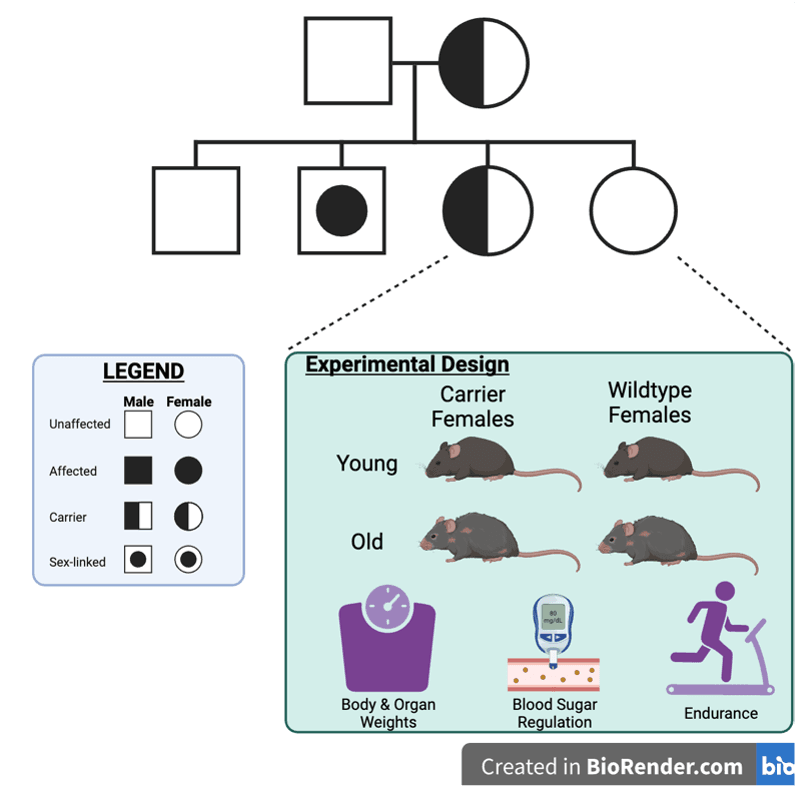Evaluation of Barth syndrome Manifestations in Female Carrier Mice
Article Title: Phenotypic Characterization of Female Carrier Mice Heterozygous for Tafazzin Deletion
Authors: Michelle V. Tomczewski, John Z. Chan, Duaa M. Al-Majmaie, Ming Rong Liu, Alex D. Cocco, Ken D. Stark, Douglas Strathdee, and Robin E. Duncan
Journal: Biology (Link to Article)

Barth syndrome is a disease that affects the heart, skeletal muscle and immune system. Barth syndrome is caused by changes in a gene called TAFAZZIN, which is located on the X-chromosome. Because TAFAZZIN is X-linked, nearly all cases of Barth syndrome are in males while females are referred to as carriers, meaning they have one altered (i.e. mutated) version of TAFAZZIN and one normal copy (How do X-linked genes work?). In clinical studies, most of the symptoms documented in male Barth syndrome patients have not been found in female carriers. In a recent paper by PhD student Michelle Tomczewski and additional researchers from Dr. Robin Duncan’s lab at the University of Waterloo, the team explored whether there were any more subtle differences in female carriers (also called “heterozygotes”) versus non-carrier mice (also called “wildtype” or control mice) using a mouse strain that has been genetically engineered to lack tafazzin.
Male mice lacking tafazzin develop many features of Barth syndrome similar to humans, but female mice that carry only one changed/mutated copy of tafazzin had not yet been studied in depth. To address this, the Duncan lab looked at carrier and wildtype female mice at 3 months (similar to a young adult) and 12 months of age (middle-aged). Almost no differences were observed between the carrier and wildtype mice at 3 months of age while 12-month-old carrier mice weighed slightly less than wildtype mice of the same age. While no differences in movement or activity were observed between the two mouse strains at either timepoint, carrier mice did reach exhaustion faster than wildtype mice at 12 months old and this was correlated with lower tafazzin expression in the hearts of carrier females. Carrier mice also demonstrated better regulation of blood sugar at 12 months old compared to their wildtype siblings, which could mean female carriers may be protected from diabetes and is something worth evaluating further in human carriers.
Take-Home Message: Though the Duncan lab did not find a long list of differences between the carrier (heterozygote) females and wildtype (control) female mice at the ages investigated, consistent with what has been observed in humans, the subtle changes they did uncover are important for our continued understanding of female carriers as they age. Future research will focus on looking at older “senior citizen” carrier mice to see if other differences continue to emerge and whether these are observed in humans.



